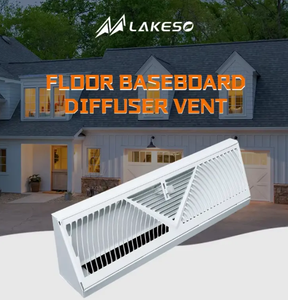
All categories
Featured selections
Trade Assurance
Buyer Central
Help Center
Get the app
Become a supplier

(1351 products available)













































A baseboard lowes is a board used to cover the joint between the wall and the floor. Baseboards protect the walls from scuff marks caused by furniture and feet. They also cover the uneven edges of walls and floors. Baseboards come in different materials, sizes, and styles. Here are the different types of baseboards:
Wood Baseboards
Wood baseboards are standard and popular. They are made from different types of wood that can be soft or hard. Softwood baseboards are made from materials like pine, spruce, and fir. Pine is the most commonly used wood. Softwood baseboards are cheaper and easier to work with. They are mostly used in low-budget projects or homes. Softwood baseboards can be stained or painted to match different styles. Hardwood baseboards are made from harder woods like oak, maple, and cherry. They are more expensive and durable. Hardwood baseboards are used in high-end homes or projects that need more quality.
Vinyl Baseboards
Vinyl baseboards are a good choice for rooms that have a lot of water. They are made from plastic, which means they won't get ruined by water. These baseboards come in different colors and styles that look like wood. They are also easier to clean than other types of baseboards. Vinyl baseboards are often used in bathrooms, kitchens, and places that have commercial buildings.
MDF Baseboards
MDF stands for Medium Density Fiberboard. These baseboards are made from recycled wood pieces mixed with glue and pressed into a board. MDF baseboards are smooth, and this makes them good for painting. They are also less likely to get bent or have gaps compared to wood baseboards. However, MDF baseboards are not as strong as wood baseboards, and they can be damaged by water if they are not treated properly. These baseboards are mostly used in homes that want a clean and modern look without spending too much money.
Flex Baseboards
Flex baseboards are special because they can bend. They are made from materials like PVC or rubber. Flex baseboards are used in places that have curved walls or surfaces. They help give a finished look to walls or surfaces that are not straight. These baseboards are used by professional builders because they need special skills to install them.
Protection and Preservation:
Baseboards serve an essential purpose by safeguarding the lower part of walls from knocks, scratches, and harm brought about by furniture and day-to-day exercises. Without baseboards, walls would be more defenseless to harm from vacuum cleaners, shoes, and other everyday items. Baseboards act as a shield, protecting walls and keeping them in excellent condition.
Materials and Their Significance:
Baseboards come in different materials, each offering remarkable advantages. Painting baseboards permits customization to coordinate with walls or differentiating tones. PVC baseboards are famous for their dampness opposition and life span, making them ideal for restroom and kitchen applications. Wood baseboards add a tasteful and exemplary touch, while MDF baseboards give a smooth completion and are reasonably priced. Knowing these materials empowers mortgage holders to pick the most reasonable baseboard for their necessities and spending plan.
Enhancing Design and Style:
Baseboards are not just functional; they are likewise stylishly satisfying. They can improve the plan and style of any room. The plan of baseboards can influence how spaces are seen. Tall baseboards make a striking proclamation, giving a rich and sumptuous look. Then again, thin baseboards offer a cutting-edge and smooth feel. Baseboards are a chance for mortgage holders to communicate their style, and with various shapes, profiles, and statures, they can add an ideal completing touch to any inside plan.
Low Maintenance and Longevity:
Baseboards are a wise speculation for any home or business space. They require little support and have life span. A straightforward wipe is frequently expected to keep baseboards clean and new. They are built to endure everyday hardship and keep up with their usefulness and appearance over the long haul. Baseboards are intended to be tough and dependable, giving consistent assurance to walls and adding to the space's stylish appeal. With low upkeep and life span, baseboards are a brilliant and reasonable decision for any property holder or entrepreneur.
Baseboards are used in different applications. Whether in residential or commercial spaces, homeowners and designers will always choose a baseboard to finish their walls. Here are some common use scenarios:
Residential Applications:
Baseboards in residential spaces are functional and decorative. They help give a cohesive look to homes and also protect the walls from scuff marks. Baseboards also cover imperfections that may be on the lower part of the wall. These may include wiring or any other form of damage. Different types of baseboards are used in homes depending on the architectural design. For example, Victorian-era homes use a more ornate and detailed baseboard to match their historical design. On the flip side, modern homes use simpler and cleaner baseboards that offer a minimalist look.
Commercial Applications:
Commercial spaces use baseboards for both functional and practical reasons. First, they offer wall protection from furniture, foot traffic, and any other form of impact. This is important since walls in commercial spaces can get damaged easily. Baseboards also allow for easy cleaning since they are installed in a straight line. This makes sweeping and mopping easier. Baseboards in commercial spaces are also built to last and are made from durable materials like PVC or vinyl. They are also customizable to fit the needs and requirements of the commercial space.
Baseboards in Different Environments:
Baseboards are used in different environments. For instance, in coastal areas, the baseboards are made with water-resistant materials to prevent rot and damage from moisture. In other areas, especially those with high temperatures, designers and homeowners choose baseboards that can withstand extreme weather conditions. This prevents warping and cracking. In addition, baseboards are also used in outdoor environments like patios, gazebos, and decks.
Construction Material
The baseboard is built with various materials, and each material has unique characteristics that offer distinct advantages and disadvantages. When selecting a baseboard, it is essential to consider the construction material of the baseboard.
Style and Size
When it comes to choosing a Baseboard at Lowe's, considering style and size is very important. The size of the baseboard should also consider the room's design and available space. A more intricate and detailed design may be suitable for a larger space, while a smaller profile may be more appropriate for a smaller space. The baseboard's style should match the room's overall aesthetic to create a cohesive look.
Color and Finish
When choosing a baseboard, the color and finish are essential elements to consider. One should ensure that the baseboard is consistent with the room's overall aesthetic, which includes the wall color, flooring, and other elements within the room. In addition, the baseboard may serve as a subtle accent if the baseboard is painted or stained in a different color than the walls.
Functionality
The baseboard serves as a protective barrier between the walls and floor, preventing scuff marks, dirt, and damage from furniture. Therefore, when considering the functionality of the base board, it is important to choose one that can adequately protect the walls, especially in high-traffic areas like hallways and living rooms.
Ease of Installation
When considering the ease of installation for baseboards, it is essential to consider various factors that can affect how simple or complicated the process can be. First, look at the baseboard design. Simple baseboards with straight cuts are more comfortable to install than complex baseboards with detailed profiles.
Price
Price can be an important factor when choosing a baseboard because it can significantly impact your budget. First, it is essential to determine the amount needed for the project and the price range. Once the amount and price range have been determined, it is time to shop around and compare prices.
Q1: What is the difference between a baseboard and a crown board?
A1: Baseboards and crown molding serve different purposes. Baseboards are functional and decorative, protecting walls from damage and covering gaps between walls and floors. They add visual appeal to the room. Crown molding, on the other hand, is purely decorative. It is installed where the walls meet the ceiling to enhance the aesthetics of a room. While baseboards have a practical function, crown molding is solely for embellishment.
Q2: Do baseboards add value to a home?
A2: Yes, baseboards can add value to a home, especially if they are well-crafted and properly installed. Upgraded baseboards provide an impression of attention to detail and can improve the overall aesthetic appeal of the home. Potential buyers may appreciate the extra embellishment, which adds to the home's ambiance.
Q3: Do baseboards get mounted on the drywall or concrete?
A3: Baseboards can be mounted on drywall or concrete. If a baseboard is mounted on a concrete wall, it will cover less surface area than one mounted on drywall. However, regardless of the base upon which it is mounted, the baseboard will serve the same purpose.
Q4: What are the two types of baseboards?
A4: There are two main types of baseboards: traditional and modern. The traditional baseboard has a more detailed profile, with a decorative cap and concave molding. The modern baseboard is simpler and has a flat top with a more pronounced molding.